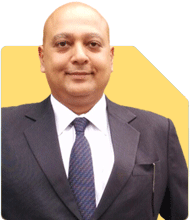
Hi sir ,I am 37 years now, my investments are like this
1,invested in hdfc pro growth ULIP plan for 10 years every year 25k and in another 2 years r remaining
2, hdfc sanchey plus 1 lakh per year for 10 years at 15 th year will get lump sum 18lakhs
3, hdfc sampoorna Niveah for 5 years each year 61k
4, lic Jeevan Lakshay for 18 years every month 5780 I pay at maturity I will get 24.7 lakhs in 2043
5, PPF every month 2k
6,mutual fund sip of 8k per month in
a,Mirae asset tax saver lumsum had invested 10k now it is giving me 109% profit should I keep it or remove it
b,sbi small cap fund -500/month
C,Parag Parikh flexicap fund -1k/ month
D,nippon India Pharma fund -500/month
E,sbi nifty index -500/month
F,Tata India consumer fund- 500/month
G,axis multi asset allocation fund - 1000/month
H,dsp natural resource lump sum 1k having 109 % returns
I,quant infra fund direct -1k /month
J,nippon indian small cap-1 k /month
K,,sbi gold direct plan -1 k /month
L,Motilal Oswal mid cap -1 k / month
Plz suggest any changes and good investment plans
Ans: Enhancing Your Investment Strategy: Recommendations and Considerations
Your investment portfolio demonstrates a disciplined approach towards wealth creation and financial planning. Let's delve deeper into the various components of your portfolio and provide recommendations to optimize your investment strategy.
Fixed Income Investments:
Public Provident Fund (PPF):
Your monthly contribution of 2,000 rupees to PPF provides tax-efficient returns with a long-term investment horizon.
Continue investing to benefit from compounding growth and tax benefits over time.
Mutual Fund SIPs:
Equity Mutual Funds:
Your portfolio comprises a diversified mix of equity mutual funds, including Mirae Asset Tax Saver, SBI Small Cap, Parag Parikh FlexiCap, Nippon India Pharma, Tata India Consumer, Axis Multi Asset Allocation, and Motilal Oswal Mid Cap.
These funds offer the potential for wealth creation over the long term.
It's advisable to review the performance of each fund periodically and consider rebalancing based on market conditions and your risk tolerance.
Gold and Sectoral Funds:
You've allocated funds to sectoral funds like SBI Gold Direct Plan, DSP Natural Resource, Quant Infra Fund, and Nippon India Small Cap.
While sectoral funds and gold provide diversification benefits, they are subject to market volatility.
Monitor their performance regularly and adjust allocations accordingly to manage risk effectively.
Recommendations and Considerations:
Review ULIPs:
Surrendering existing insurance policies and reallocating the funds into mutual funds can be a strategic move to optimize your investment portfolio and potentially enhance long-term returns. Let's delve deeper into this approach and explore its benefits and considerations.
Analysis of Insurance Policies:
HDFC Pro Growth ULIP Plan:
Evaluate the ULIP's performance, charges, and insurance coverage.
Assess if the returns justify the associated costs and if the insurance coverage meets your needs.
HDFC Sanchay Plus:
Consider the opportunity cost of tying up funds for 15 years for a lump-sum payout.
Assess whether the returns align with your financial goals and if alternative investment avenues offer better growth potential.
HDFC Sampoorna Nivesh:
Review the performance and liquidity features of the plan.
Determine if the returns are competitive compared to other investment options and if the plan aligns with your risk profile.
LIC Jeevan Lakshay:
Evaluate the maturity benefits and compare them with alternative investment avenues.
Consider surrendering the policy if the returns are suboptimal or if better investment opportunities are available.
Benefits of Reallocating to Mutual Funds:
Enhanced Returns Potential:
Mutual funds, especially equity funds, have historically outperformed traditional insurance plans over the long term.
By reallocating funds, you may potentially benefit from higher returns and capital appreciation.
Greater Flexibility and Liquidity:
Mutual funds offer greater liquidity compared to insurance policies with lock-in periods.
You can access your funds as needed without penalties, providing flexibility in managing your financial goals.
Diversification and Risk Mitigation:
Mutual funds offer diversification across various asset classes and investment strategies.
Diversifying your portfolio reduces concentration risk and enhances overall risk-adjusted returns.
Considerations Before Surrendering Policies:
Surrender Charges and Penalties:
Evaluate the surrender charges and penalties associated with terminating insurance policies prematurely.
Compare the costs with the potential benefits of reallocating funds to mutual funds.
Insurance Needs and Coverage:
Assess your insurance needs and ensure adequate coverage for life, health, and other contingencies.
Consider retaining essential insurance policies while surrendering redundant or underperforming ones.
Recommended Action Plan:
Evaluate Surrender Value:
Obtain surrender values and assess the financial implications of surrendering each insurance policy.
Consider surrendering policies with high charges or low returns, prioritizing those that offer better growth potential elsewhere.
Reallocate Funds to Mutual Funds:
Identify suitable mutual funds based on your investment objectives, risk tolerance, and investment horizon.
Allocate surrendered funds to a well-diversified mutual fund portfolio across equity, debt, and other asset classes.
Regular Review and Monitoring:
Periodically review your mutual fund portfolio's performance and make adjustments as needed.
Consult with a Certified Financial Planner to ensure your investment strategy aligns with your financial goals and risk tolerance.
Surrendering insurance policies and reallocating funds to mutual funds can optimize your investment portfolio, potentially enhancing long-term returns and flexibility. By carefully evaluating your insurance needs, surrender charges, and investment opportunities, you can make informed decisions to achieve your financial objectives.
Optimize Mutual Fund Portfolio:
Regularly monitor the performance of equity and sectoral funds in your portfolio.
Consider consolidating or reallocating funds based on performance, risk, and investment objectives to maximize returns.
Asset Allocation:
Maintain a balanced asset allocation strategy across equity, debt, and alternative investments to mitigate risk and achieve long-term financial growth.
Diversification:
Ensure your portfolio is well-diversified across asset classes and investment avenues to minimize risk and maximize returns.
Regular Review:
Periodically review your investment portfolio with a Certified Financial Planner to make informed decisions and adapt to changing market dynamics and personal financial goals.
Conclusion:
By following these recommendations and considerations, you can optimize your investment portfolio, maximize returns, mitigate risks, and achieve your long-term financial objectives effectively.
Best Regards,
K. Ramalingam, MBA, CFP,
Chief Financial Planner,
www.holisticinvestment.in

























